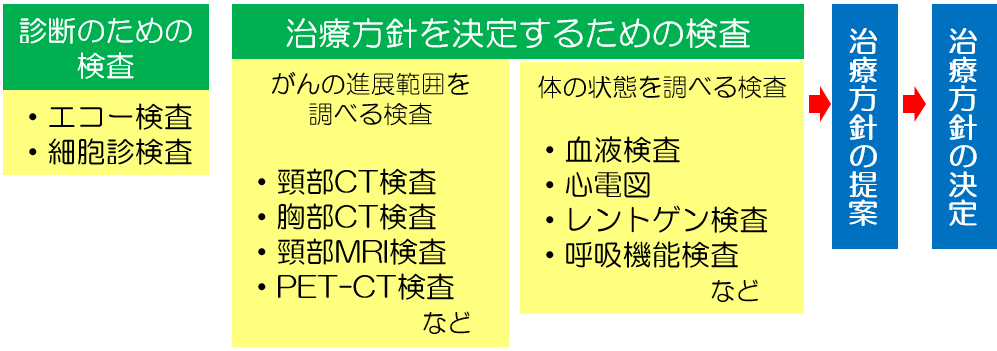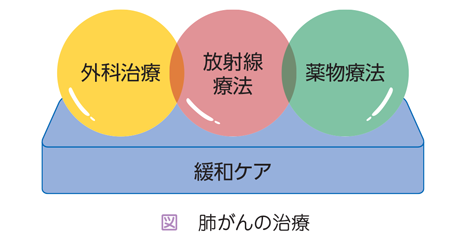Malignant pleural mesothelioma
Treatment of malignant pleural mesothelioma at our hospital
Since malignant pleural mesothelioma is a rare disease, the combination and order of these has not yet been established.
- Organizational results
- Progression of cancer (stage classification)
- Expected treatment goals
- Patient's condition (health and physical strength), complications (chronic condition) and age
Considering these factors, based on the lung cancer clinical practice guidelines (including malignant mesothelioma), Thoracic Medicine and Thoracic Surgery will hold a joint conference to propose the optimal treatment method in combination. After that, the doctor in charge will give a thorough explanation and consult with the patient before proceeding with treatment.
What is malignant pleural mesothelioma? (Cause / occurrence / progress)
The surface of the lungs is wrapped in a sac-like membrane called the pleura.
Malignant pleural mesothelioma is a malignant tumor that develops from this pleura and is a relatively rare tumor.
Pleural normal pleura is of the order of food wrap thickness (several tens of μ m micrometers), but thickened to more than a few mm and cancerous, and proceeds will earn pleural effusion (pleural effusion).
▶悪性胸膜中皮腫の症状
初期では症状はとくになく、検診などで胸水として指摘されることがほとんどです。進行すると胸膜の腫瘍が大きくなったり胸水が増えたりすることによる胸の痛みや息苦しさ、咳などの症状が出現します。しかし、これらの症状は悪性胸膜中皮腫にかぎった症状ではなく、ほかの病気でもよくみられるため、診断に時間がかかることも少なくありません。さらに進行し、ほかの臓器に転移した場合は転移した先の臓器によってさまざまな症状が起こります。

▶悪性胸膜中皮腫の種類
悪性胸膜中皮腫は「上皮型(じょうひがた)」、「肉腫型(にくしゅがた)」、その両方が混ざって存在する「二相型(にそうがた)」の3種類に分類されます。これらは悪性の程度が異なるため、その後の治療方針や予後に影響します。
尚、悪性胸膜中皮腫はアスベスト(石綿)が原因である場合が多く、アスベスト曝露のある方は国の救済制度が適用されます。担当医にご相談ください。
Diagnostic method
The general flow from diagnosis to treatment is as follows.

(1) Examination for tissue and cytodiagnosis (confirmed diagnosis)
Malignant pleural mesothelioma often has pleural effusion. In such cases, first collect the pleural effusion under local anesthesia and examine the cells in the pleural effusion. This is called "pleural effusion cytology". The test uses local anesthesia and is devised to prevent pain.
Although the diagnosis may be confirmed only by pleural effusion cytology, the diagnosis of malignant pleural mesothelioma may be difficult even for a skilled pathologist, and it may be difficult to distinguish it from a benign disease. Therefore, when malignant mesothelioma is suspected by pleural effusion cytology, a "pleural biopsy" is often required to collect a part of the pleura. A pleural biopsy is performed under general anesthesia by inserting an endoscope called a thoracoscope with a thickness of about 1 cm into the chest, observing the lesion, and collecting a part of the pleura.
As a biopsy method other than thoracoscope, CT There is a percutaneous needle biopsy (Keihiki Hariseken) that pierces the needle through the skin while checking the lesion with ultrasound or ultrasound. We use local anesthesia and devise to prevent pain.
Generally, from the time a biopsy is performed until the result of a pathological diagnosis is obtainedIt can take a few days to a week.
(2) Examination to determine treatment policy
The treatment policy for malignant pleural mesothelioma is determined according to the staging (stage described later). For evaluation of staging, it is necessary to examine the spread to organs throughout the body.
1) CT examination
You can use X-rays to take cross-sections and stereoscopic images of your body. Evaluate the size and location of the cancer, the presence or absence of lymph node metastasis, and the presence or absence of metastasis to organs such as the abdomen.
2) PET inspection
This test detects cancer throughout the body by injecting glucose with an isotope (radioactive substance) as a marker and photographing the distribution of its uptake. Cancer cells are so active that they need more glucose than normal cells. Therefore, the spread of cancer can be seen by looking at the site where isotopes are gathered (accumulated) higher. We will introduce you to a facility specializing in inspections and perform inspections.
3) MRI examination
By using the power of magnetism, you can photograph the inside of the body. It is mainly used when examining lesions in the brain and bones.
4) Bone scintigraphy
By using the power of magnetism, you can photograph the inside of the body. It is mainly used when examining lesions in the brain and bones. PET examination may be used instead.
About staging (stage)
Malignant pleural mesothelioma is classified into stages I to IV according to the degree of progression.
Initially grown in the pouch-like pleural (Ⅰ A period). Then, adjacent to the diaphragm, mediastinal fat, and infiltration to the chest wall to the pericardium and localized (Ⅰ B stage). In addition to transition to the intrathoracic lymph nodes on the same side (Ⅱ stage, stage Ⅲ A). Before long, extensive infiltration in the chest wall, progress to the heart and large blood vessels, trachea, esophagus and the abdominal cavity, also spread to the intrathoracic lymph nodes of the contralateral (Ⅲ B stage). Eventually, it metastasizes to distant organs (stage IV).
Japan Lung Cancer Society ed .: Lung Cancer Guidebook for Patients 2019 Edition. P 153. Kanahara Publishing
Method of treatment
Surgery treatment, radiation therapy, chemotherapy (pharmacotherapy), and palliative treatment, and these are combined and treated.

Japan Lung Cancer Society ed .: Lung Cancer Guidebook for Patients 2019 Edition. P 66. Kanahara Publishing
(1) About surgery
Generally, it is selected in the case of "epithelial type" in stage I to III. The surgical procedure is "pleural resection (pleural resection) / pulmonary demolition (yes hakuhijutsu)" in which only the pleura is removed and the lungs are preserved, and "total pleural pneumonectomy (today)" in which the pleura and lungs are removed together. There is "Makuha Izenkijutsu". Both because it is surgery burden is greater to the body, on the basis of the operative evaluation of the previous general condition, about the benefits and disadvantages Surgery will decide consult well with the doctor.
(2) Chemotherapy (drug therapy)
It is a treatment that suppresses the growth or slows the growth of cancer by taking the drug into the body by intravenous drip or oral administration. Since the medicine that enters the body goes around the whole body, it can be expected to be effective even if it has spread to other organs.We propose chemotherapy that suits the patient's cancer nature, physical strength, and wishes.
Drugs used for malignant mesothelioma include "immune checkpoint inhibitors" and "cytotoxic anticancer drugs".Depending on the drug, the treatment may be hospitalized, but in each case it is possible to continue the treatment while living a normal life.
- Cytotoxic anticancer drugs are drugs that focus on the mechanism of cell proliferation and attack cancer cells by interfering with a part of the mechanism. Normally growing cells other than cancer are also affected.
- Immune checkpoint inhibitors are drugs that exert your own immune system and maintain the ability to attack cancer cells.
Before treatment, the attending physician will explain the treatment, and then the Pharmacist will explain the treatment plan and side effects at the outpatient department of the Pharmacist to support the patient so that he / she can start treatment in the correct way with peace of mind. In addition, during the administration period, the attending physician, Registered Nurse, Pharmacist, oral Surgery, nutrition manager, and Clinical Psychologist will form a team to support you so that you can treat as comfortably as possible.
<Chemotherapy room of our hospital>

(3) About radiation therapy
It is rarely given alone and is often given in combination with Surgery In particular, it is expected to be effective as an adjunct therapy after total pleural pneumonectomy. Local radiation therapy may also be given at the time of recurrence.
(4) About palliative treatment
Palliative care is to relieve the symptoms of various physical and mental pains associated with cancer in order to maintain the quality of life (QOL) from the time the cancer is diagnosed. It is a treatment that allows you to spend time. Not only after the cancer has progressed, but also from the time the cancer is diagnosed, it is performed as needed, and a wide range of responses are provided as desired.
Please proactively tell the medical staff about the difficulty that only you can understand.
Subject in charge
- Head and neck cancer
- lung cancer
- Malignant pleural mesothelioma
- Liver cancer
- Pancreatic cancer
- Colorectal cancer
- Bladder cancer
- Prostate cancer
- Brain tumor
- Thyroid cancer
- Esophageal cancer
- Breast cancer
- Gastric cancer
- Kidney cancer
- Renal pelvis cancer / ureteral cancer
- Ovarian cancer
- Endometrial cancer
- Cervical cancer
- Skin cancer
- Cancer of unknown primary

